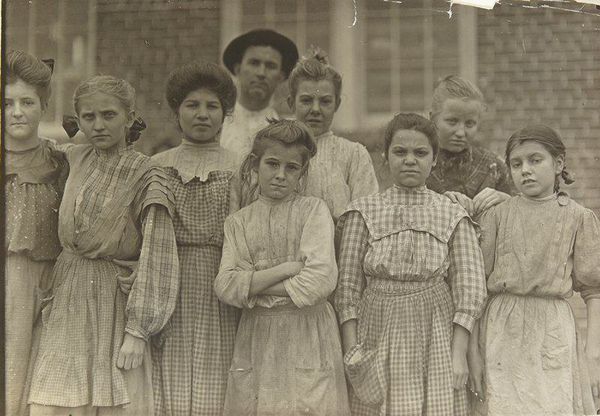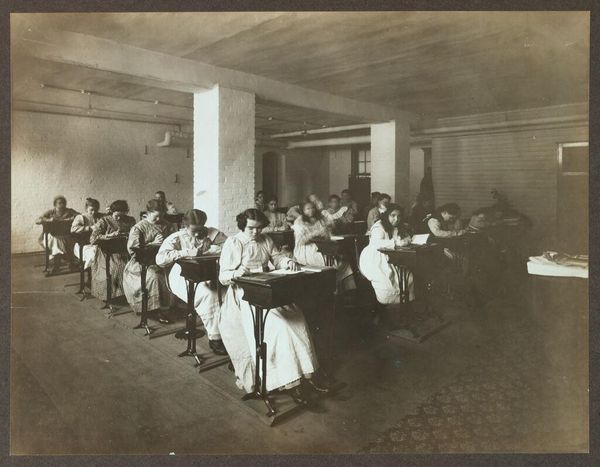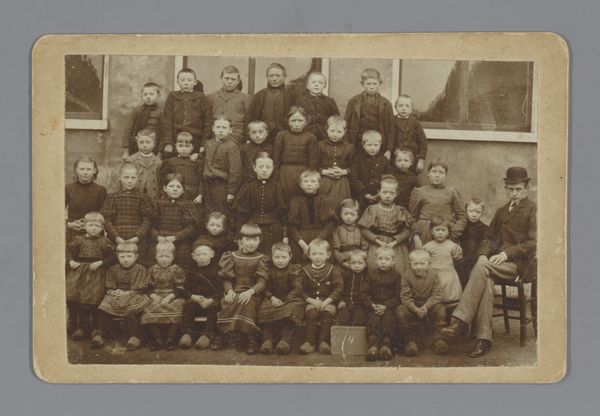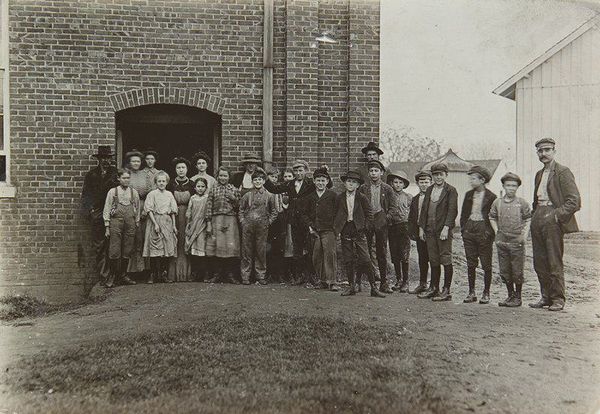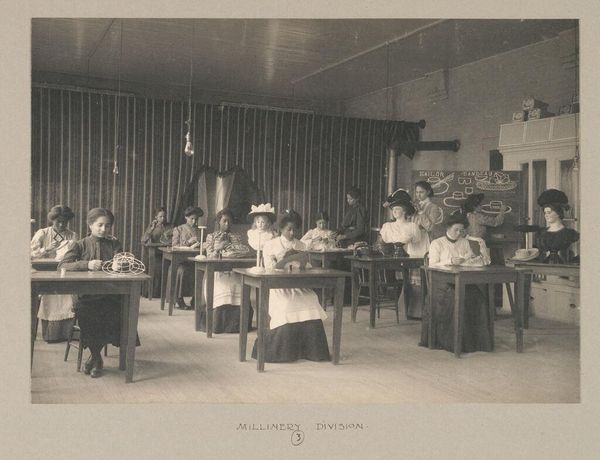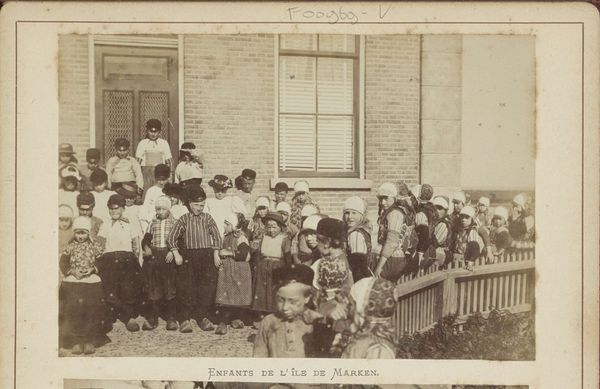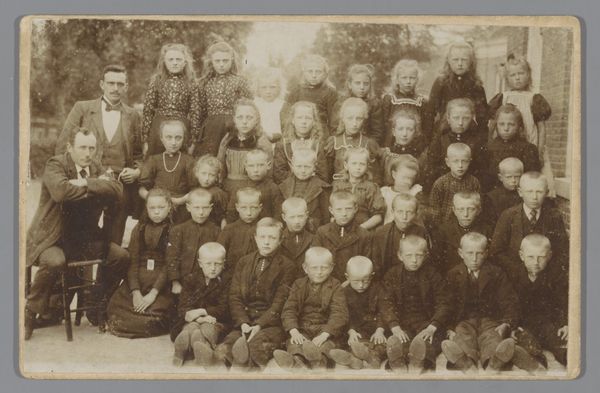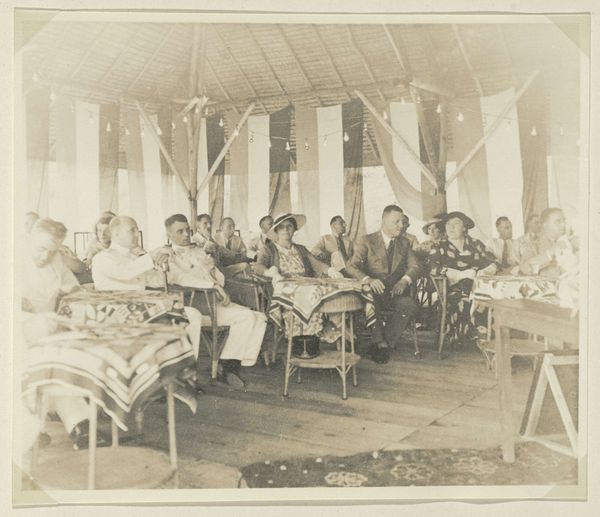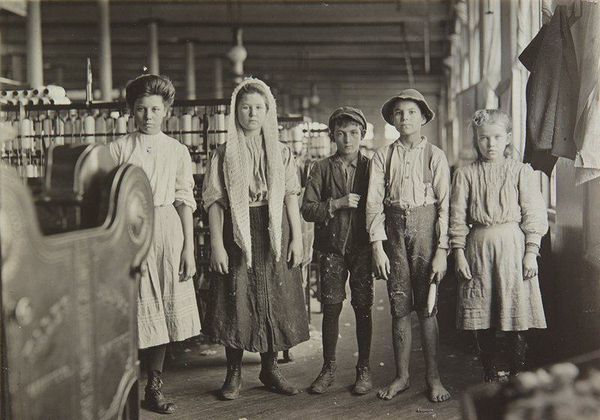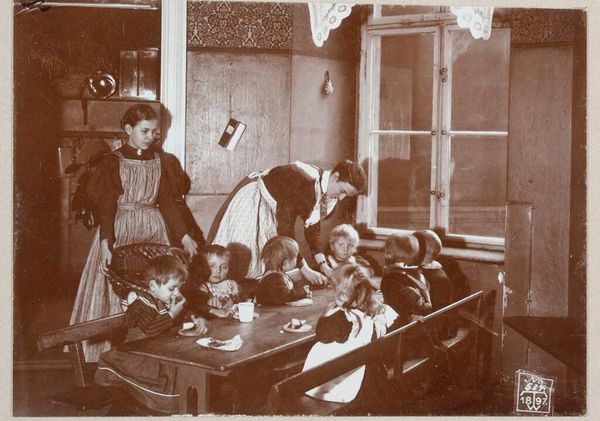
gelatin-silver-print, photography, gelatin-silver-print
#
portrait
#
gelatin-silver-print
#
social-realism
#
photography
#
historical photography
#
gelatin-silver-print
#
ashcan-school
Dimensions: 4 11/16 x 6 5/8 in. (11.91 x 16.83 cm) (image, sheet)
Copyright: No Copyright - United States
Curator: Right now, we're looking at an untitled photograph by Lewis Hine, taken around 1908. Hine, associated with the Ashcan School, used his camera as a tool for social reform. This gelatin silver print resides here at the Minneapolis Institute of Art. Editor: My gut reaction? This photograph is a symphony of muted tones, all grays and browns, which adds to the somber mood. It feels heavy. But the scale of the image is quite large, almost life-size, so you can engage fully with the faces in the crowd, their expressions. Curator: Hine's photographs are dense with meaning; the large group format resembles both school portraits and the visual style of mugshots, capturing a critical perspective. We see this gathering of young faces within the walls of what appears to be a textile factory. Notice the industrial machinery looming over them? Editor: Right! There's such a contrast there: youth against heavy machinery, life being sapped by a relentless system. Their expressions haunt me... that mix of resignation, weariness, and even a bit of defiance. I wonder what dreams they have hidden beneath their stoic faces. The setting acts as an imprisoning background for all those lives wasted in labor. Curator: Absolutely. The presence of the factory, combined with Hine's composition, pushes beyond a mere portrait; this photo becomes a profound commentary on child labor during the early 20th century. We begin to interpret childhood as both a universal and culturally-constructed symbol challenged and oppressed by these working-class symbols of labor. It prompts us to face uncomfortable truths about the exploitation of innocence. Editor: It makes you want to reach through time and rescue them, doesn't it? But, you know, I also detect a certain resilience in their eyes. Maybe, just maybe, their spirits aren't entirely broken. Or perhaps, I am simply seeking a silver lining within such a profoundly difficult scene. Curator: I share your feelings when trying to engage emotionally. This photograph continues to stir within us questions about society, humanity, and hope, making Hine’s artistry extremely meaningful even today. Editor: Agreed, what stays with me the most is how skillfully a seemingly simple composition unveils such emotional depth; It’s both beautiful and heartbreaking all at once.
Comments
minneapolisinstituteofart almost 2 years ago
⋮
Lewis Hine was a documentary photographer, educator, and social reformer. Trained in sociology, Hine taught at the progressive Ethical Culture School in New York City before turning his attention to photography. As a photographer for the National Child Labor Committee (NCLC), Hine traveled the United States to document children in unsafe working conditions in factories, mines, fields, and city streets. Over ten years, he created an indelible record of the human cost of an exploitative labor market, documenting the tired faces of children at the end of their shifts, or even children mutilated by industrial machinery. These disturbing photographs were used in publications and presentations created by Hine and the NCLC, and ultimately promoted sweeping policy changes designed to protect children.
Join the conversation
Join millions of artists and users on Artera today and experience the ultimate creative platform.
